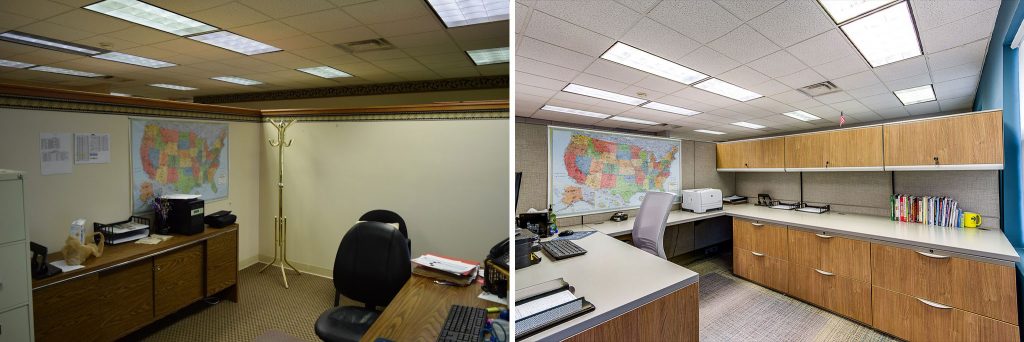Designers can make your space look great, but can workplace issues be resolved through design? The focus on how people respond to and interact with their surroundings is known as Environmental Psychology, and it’s one of my favorite research subjects. I enjoyed taking this course so much that I later returned as an instructor. I found it infinitely rewarding watching my students begin to understand how a designed environment affects people. Teaching them the stuff that makes designers out of decorators; how to design purposeful spaces for learning, healing, gathering or working.
Technically, each of these functions could take place in the same vanilla box. But the spatial considerations for a yoga studio vary greatly from those of a coffee shop. If you remove the table and chairs from a restaurant and replace it with cubicles – could it serve as an office? Perhaps, but it would suffer functionally, with a good amount of the space dominated by a now irrelevant commercial kitchen and other unnecessary elements. In turn, your staff and work product would suffer.

Photo: John Fountain
A well-designed space should project and serve its intended purpose. Successful brands have tuned towards this mentality, using their spaces to create an experience and elicit specific responses from employees and customers. These cutting edge companies stay at the forefront of their fields by designing spaces that promote positive, productive employees, and interactive environments for their customers.
Employers can fall short when they view a workspace as solely a space in which to work. In this case, we ask what their goal is for their employees: Do you want workers? Or do you want productive, focused individuals, capable of providing an amazing customer experience? One of the often overlooked considerations of a workspace is employee comfort. Do they have adequate lighting, acoustic privacy, and access to other resources needed to be efficient? Is there enough storage or do unsightly stacks of paperwork clutter every visible work surface?

Before & After
You may have recognized the obvious solutions to these common issues, but even designers can fall victim to disorganization and discomfort. While I am generally organized and most of my files and projects have a home, today the clutter creature was intruding on my focus. It was distracting, and I couldn’t afford to put it off any longer, so I took some time to spruce up my desk before getting down to business. Not only did it take way less time than anticipated, but it helped me to actually stay focused when I started working.

Photo: Miguel Emanuelli
Never underestimate the effect a well-designed workspace can have on your ability to focus and your productivity. Not to mention … your employees and your sanity will thank you!
